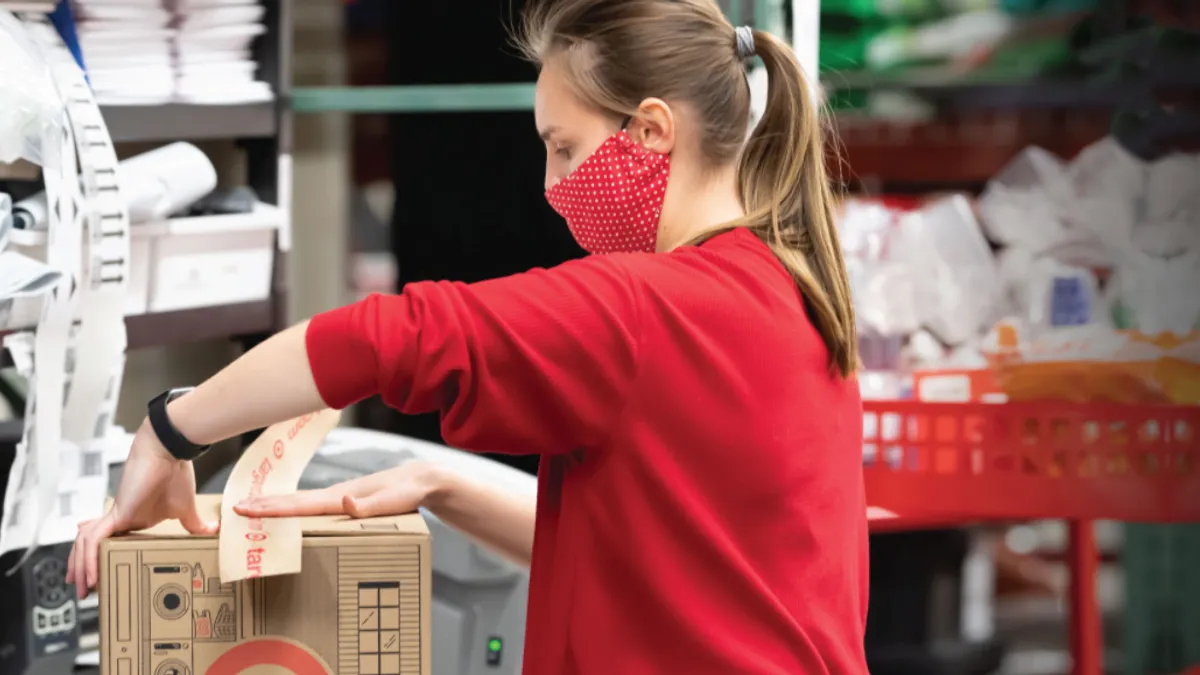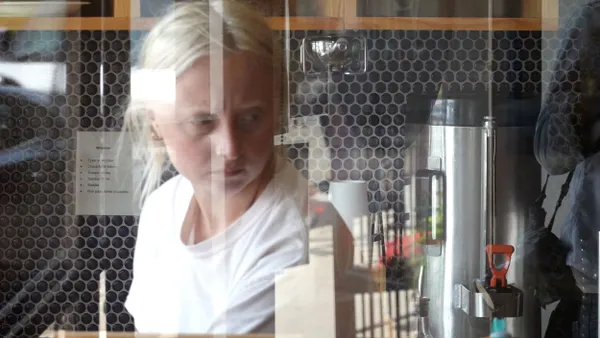Dive Brief:
- Seasonal retail jobs dropped 7% from October through December, according to Challenger, Gray & Christmas's analysis of Bureau of Labor Statistics data. The drop was the largest since 2016, when hiring fell nearly 9.6%.
- Transportation and warehousing jobs also fell — but very slightly (less than 1%) — after last year's 67.4% growth, according to Challenger.
- "The onslaught of COVID cases, the difficulty parents are having securing child care, the sheer availability of jobs kept many from taking retail roles," Andrew Challenger, senior vice president of Challenger, Gray & Christmas, said in a statement.
Dive Insight:
Retailers complained of worker shortages well before the industry headed into a holiday season predicted to set records for spending. What few, if any, could have predicted going into the season was the introduction of the omicron COVID-19 variant and its wildfire-like spread across the U.S.
At just over 684,000, the number seasonal jobs fell short of Challenger's previous projections of 700,000 jobs for the season. Both the expected and the actual number are below last year's 736,300 seasonal retail jobs for the season. Meanwhile, early data shows that consumer spending increased from last year, meaning there were far fewer staffers to handle more sales during the season.
As individual retailers report their sales estimates for the holiday season and fourth quarter, some are detailing the disruption wrought by omicron. The virus is keeping both employees and customers out of stores as infections spiral far beyond past waves of COVID-19.
Lululemon, for example, said earlier this week that it experienced "increased capacity constraints, more limited staff availability, and reduced operating hours in certain locations" because of omicron. Big Lots said that during January so far it has seen "softening of traffic and sales trends which...has been significantly driven by the rapid spread" of omicron.
Walmart has also temporarily closed down some stores during the omicron wave, and Macy's has reduced store hours. Such operational changes could be in part to cope with staff shortages, analysts say.
Two years in, and the pandemic is still very much a part of the landscape, but its effects remain ever-changing and uncertain as the virus itself mutates, and as responses by consumers, authorities and the retail industry change. Given that even before omicron physical and mental health concerns were the primary reasons for workers staying out of the labor force, staffing issues aren't likely to go away anytime soon.














